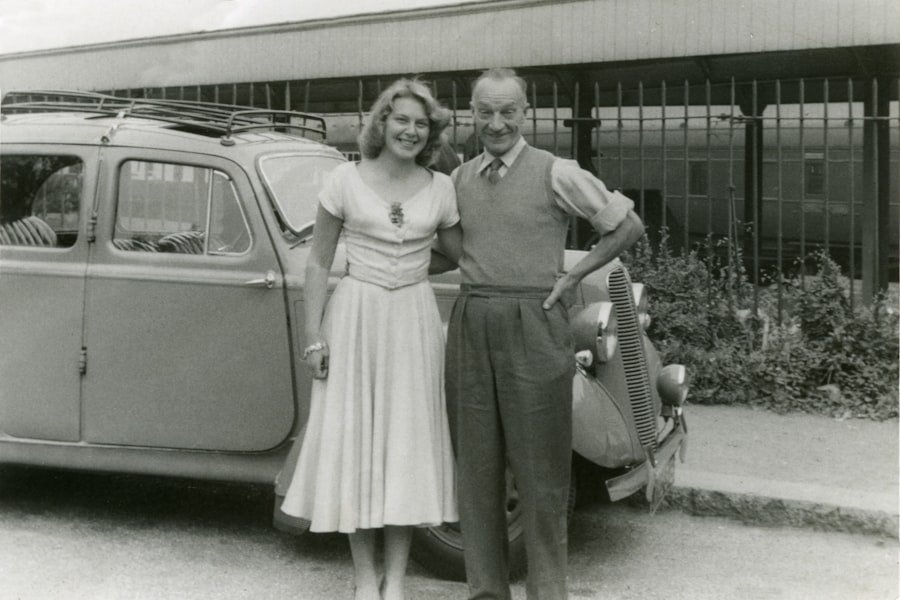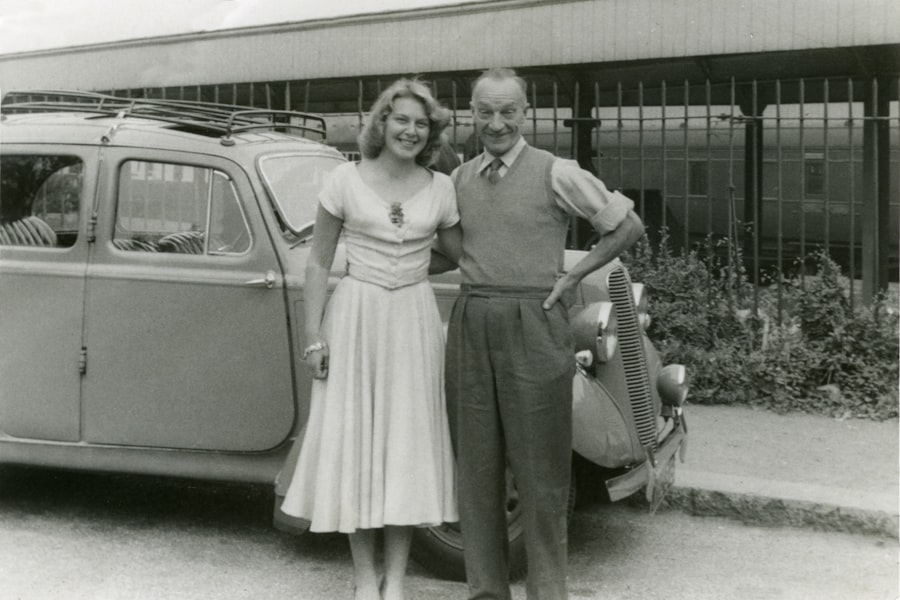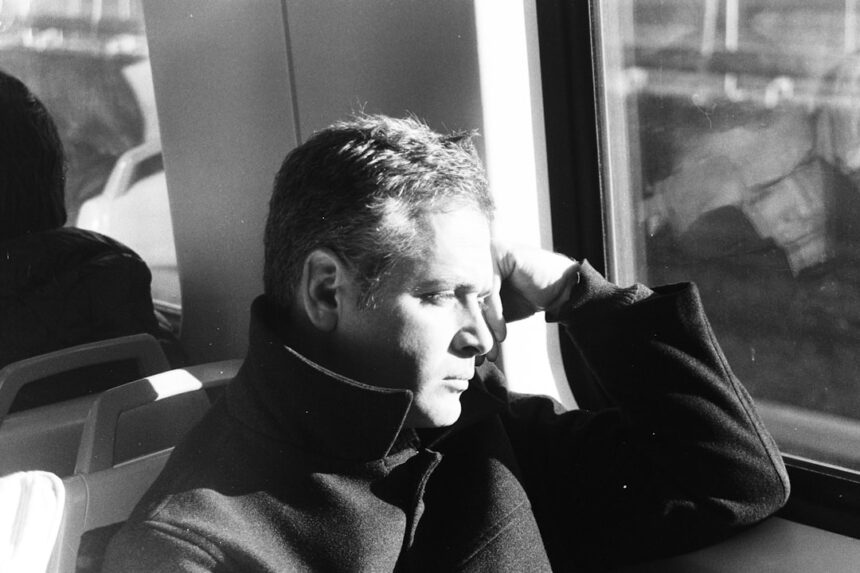Wernher von Braun was born on March 23, 1912, in Wirsitz, a small town in what was then part of the German Empire. His family was well-off, with his father serving as a prominent government official. From a young age, von Braun exhibited a keen interest in science and technology, particularly in the field of rocketry.
This fascination was further fueled by his mother, who encouraged his intellectual pursuits and provided him with books on astronomy and physics. By the time he reached his teenage years, he was already experimenting with model rockets, laying the groundwork for his future endeavors. Von Braun’s formal education began at the local gymnasium, where he excelled in mathematics and science.
He later attended the Technical University of Berlin, where he studied aeronautical engineering. His academic journey was marked by a deep commitment to understanding the principles of flight and propulsion.
This early exposure to theoretical and practical aspects of rocket science would prove invaluable as he embarked on a career that would ultimately change the course of space exploration.
Key Takeaways
- Wernher von Braun was born in Germany and studied engineering at the Berlin Institute of Technology.
- He worked with the Nazi regime during World War II, leading the development of the V-2 rocket.
- After surrendering to the United States at the end of the war, von Braun contributed to the American space program, including the development of the Saturn V rocket.
- His work on the V-2 rocket laid the foundation for future space exploration and missile technology.
- Von Braun’s role in the space race and his controversial past with the Nazi regime continue to be subjects of debate and criticism.
Work with the Nazi Regime
In the 1930s, as Germany began to rearm under Adolf Hitler’s regime, von Braun’s expertise in rocketry caught the attention of military officials. He joined the German Army’s rocket program, where he quickly rose through the ranks due to his innovative ideas and technical prowess. By 1944, he had become the technical director of the Peenemünde Army Research Center, where he oversaw the development of the V-2 rocket, the world’s first long-range guided ballistic missile.
This position not only solidified his reputation as a leading figure in rocket technology but also tied him closely to the Nazi war effort. While von Braun’s work contributed significantly to military advancements, it was not without moral implications.
Despite these troubling aspects, von Braun maintained a focus on the scientific and engineering challenges of rocketry. He believed that advancements in technology could lead to greater achievements in space exploration, a vision that would later shape his contributions to the American space program.
Surrender to the United States

As World War II drew to a close, von Braun and many of his colleagues recognized that their future in Germany was uncertain. In April 1945, as Allied forces advanced into Germany, von Braun made a pivotal decision to surrender to American troops. He and a small group of engineers sought refuge in the American sector of Germany, hoping to escape potential retribution for their work with the Nazi regime.
This surrender marked a significant turning point in von Braun’s life and career. Upon surrendering, von Braun was taken into custody by U.S. military personnel.
Initially viewed with suspicion due to his past affiliations, he quickly demonstrated his value as a scientific asset. The U.S. government recognized his expertise in rocketry and began to see him as a key figure in their own military and space ambitions.
This shift in perception would ultimately lead to von Braun’s relocation to the United States, where he would play a crucial role in shaping the future of American space exploration.
Contribution to the American Space Program
| Contributor | Contribution |
|---|---|
| Wernher von Braun | Developed the Saturn V rocket for the Apollo program |
| Katherine Johnson | Calculated trajectories for the Mercury and Apollo missions |
| Neil Armstrong | First person to walk on the moon during the Apollo 11 mission |
| Margaret Hamilton | Lead software engineer for the Apollo space program |
Once in the United States, von Braun’s talents were harnessed for the burgeoning American space program. He was initially brought to Fort Bliss in Texas, where he worked on developing ballistic missiles for the U.S. Army. His experience with the V-2 rocket provided invaluable insights that would inform future missile technology. However, von Braun’s ambitions extended beyond military applications; he envisioned a future where humans could explore outer space. In 1955, von Braun’s team was transferred to NASA, where they became instrumental in developing the Saturn V rocket, which would eventually carry astronauts to the Moon during the Apollo missions. His leadership and vision were pivotal in transforming NASA into a formidable force in space exploration. Von Braun’s ability to inspire and motivate those around him fostered a culture of innovation and collaboration within NASA, propelling the agency toward unprecedented achievements.
Development of the V-2 Rocket
The V-2 rocket represented a significant leap forward in rocket technology and served as a testament to von Braun’s engineering prowess. Developed during World War II, it was designed as a weapon capable of delivering explosive payloads over long distances. The V-2 was powered by a liquid-fueled engine that utilized a combination of alcohol and liquid oxygen, allowing it to reach altitudes of over 100 kilometers—beyond the Kármán line, which is often considered the boundary of space.
Von Braun’s work on the V-2 rocket laid the foundation for future advancements in rocketry. The principles he developed during this time would later be applied to civilian space exploration efforts. Despite its origins as a weapon of war, von Braun viewed the V-2 as a stepping stone toward more peaceful applications of rocketry.
He believed that understanding how to launch objects into space could eventually lead to human exploration beyond Earth.
Role in the Space Race

As tensions between the United States and the Soviet Union escalated during the Cold War, von Braun found himself at the forefront of the Space Race—a competition for supremacy in space exploration between the two superpowers. His expertise became increasingly vital as both nations sought to demonstrate their technological prowess through significant achievements in spaceflight. Von Braun’s vision for space exploration aligned perfectly with America’s ambitions during this critical period.
In 1961, following Yuri Gagarin’s historic flight as the first human in space, von Braun played a crucial role in NASA’s response. He advocated for an ambitious goal: landing humans on the Moon before the end of the decade. This vision culminated in President John F.
Kennedy’s famous speech declaring that America would send astronauts to the Moon and return them safely to Earth. Von Braun’s leadership in developing the Saturn V rocket made this audacious goal achievable, ultimately leading to the successful Apollo 11 mission in 1969.
Controversies and Criticisms
Despite his significant contributions to space exploration, von Braun’s legacy is not without controversy. His early work with the Nazi regime has led to ongoing debates about his moral standing and ethical responsibilities as a scientist. Critics argue that his involvement in projects that utilized forced labor raises serious questions about his character and motivations.
While von Braun himself claimed that he was primarily focused on scientific advancement, many believe that he should have taken a stronger stance against the unethical practices surrounding his work. Additionally, some critics contend that von Braun’s vision for space exploration was overly ambitious and driven by personal ambition rather than genuine concern for humanity’s future in space. They argue that his focus on large-scale projects like manned missions to Mars overshadowed other important areas of research and development within NASThese criticisms highlight the complexities of von Braun’s legacy—an individual whose remarkable achievements are intertwined with morally ambiguous choices.
Legacy and Impact on Space Exploration
Wernher von Braun’s impact on space exploration is undeniable. His pioneering work laid the groundwork for modern rocketry and human spaceflight, influencing generations of scientists and engineers who followed in his footsteps. The successful Apollo missions not only fulfilled America’s goal of landing on the Moon but also inspired global interest in space exploration and scientific discovery.
Moreover, von Braun’s vision extended beyond mere technological advancements; he dreamed of human settlements on other planets and interplanetary travel. His ideas about space colonization continue to resonate today as humanity grapples with questions about our place in the universe and our responsibilities toward it. Von Braun’s legacy serves as both an inspiration for future exploration and a reminder of the ethical considerations that accompany scientific progress.
Later Career and Achievements
In the years following the Apollo program, von Braun continued to contribute to NASA’s efforts while also advocating for future missions beyond Earth orbit. He became involved in projects aimed at developing reusable spacecraft and exploring Mars as a potential destination for human colonization. His vision for an expansive human presence in space remained steadfast throughout his career.
In 1970, von Braun transitioned from NASA to become vice president of engineering at Fairchild Industries, where he focused on developing commercial space technologies. His expertise continued to shape discussions around space policy and exploration until his retirement in 1972. Even after stepping away from active involvement in rocketry, von Braun remained an influential figure within scientific communities and continued to advocate for space exploration until his passing in 1977.
Personal Life and Family
Wernher von Braun’s personal life was marked by both triumphs and challenges. He married his childhood sweetheart, Maria Luise von Quistorp, in 1947, and together they had three daughters: Iris, Monika, and Caroline. The family often moved due to von Braun’s career demands, but they maintained close ties despite these changes.
His wife played an essential role in supporting him throughout his career while also raising their children. Von Braun was known for his charismatic personality and ability to connect with people from various backgrounds. He enjoyed sharing his passion for science with others and often participated in public speaking engagements aimed at inspiring young minds to pursue careers in science and engineering.
His commitment to education extended beyond his professional life; he believed that fostering curiosity about science was crucial for future generations.
Honors and Recognition
Throughout his life, Wernher von Braun received numerous accolades for his contributions to science and technology. He was awarded several honorary doctorates from prestigious universities and received recognition from various scientific organizations for his groundbreaking work in rocketry and space exploration. In 1975, he was inducted into the National Academy of Engineering—a testament to his lasting impact on engineering practices.
In addition to formal honors, von Braun’s legacy is celebrated through various institutions named after him, including schools and research centers dedicated to advancing aerospace technology. His story continues to be told through documentaries and biographies that explore both his remarkable achievements and complex moral considerations surrounding his life’s work. As humanity continues its journey into space, Wernher von Braun remains an enduring figure whose influence can still be felt today.
Wernher von Braun played a pivotal role during the Cold War, primarily through his contributions to the United States’ space and missile programs. His expertise in rocketry, initially developed in Germany, was instrumental in advancing the U.S. space race against the Soviet Union. For a deeper understanding of von Braun’s impact during this tense period, you can explore a related article on the subject by visiting In The War Room. This resource provides valuable insights into the strategic importance of von Braun’s work and its implications for Cold War dynamics.
WATCH THIS! 🪖How Stolen Nazis Built Cold War Power
FAQs
Who was Wernher von Braun?
Wernher von Braun was a German-born aerospace engineer and space architect who played a key role in the development of rocket technology and space exploration during the Cold War era.
What was Wernher von Braun’s role during the Cold War?
During the Cold War, Wernher von Braun was instrumental in the development of ballistic missiles and rocket technology for both the United States and the Soviet Union. He was particularly known for his work on the V-2 rocket for Nazi Germany during World War II and later for his contributions to the American space program, including the development of the Saturn V rocket that was used in the Apollo moon missions.
Did Wernher von Braun work for the United States or the Soviet Union during the Cold War?
Wernher von Braun worked for the United States during the Cold War. After World War II, he was brought to the United States as part of Operation Paperclip, a program that recruited German scientists, engineers, and technicians to work for the American government.
What were Wernher von Braun’s contributions to the American space program?
Wernher von Braun made significant contributions to the American space program, including his work on the development of the Redstone, Jupiter, and Saturn rockets. He was also a key figure in the development of the Apollo program, which ultimately led to the first manned moon landing in 1969.
Did Wernher von Braun have any controversies surrounding his work during the Cold War?
Wernher von Braun’s involvement with the Nazi regime during World War II has been a source of controversy. While he was not directly involved in war crimes, he was a member of the Nazi Party and the SS. After the war, he faced criticism for his past affiliations, but he was ultimately able to continue his work in the United States.




